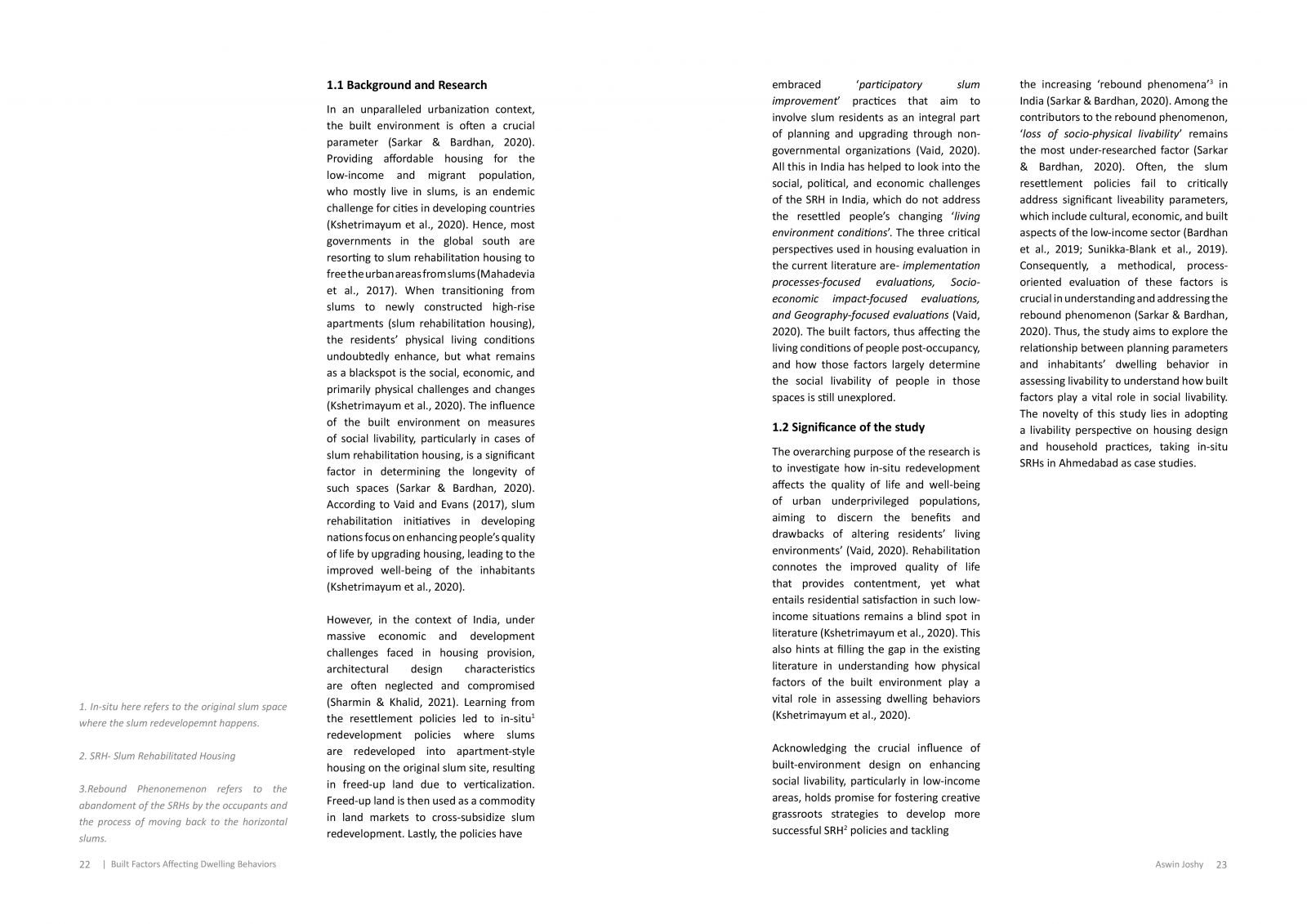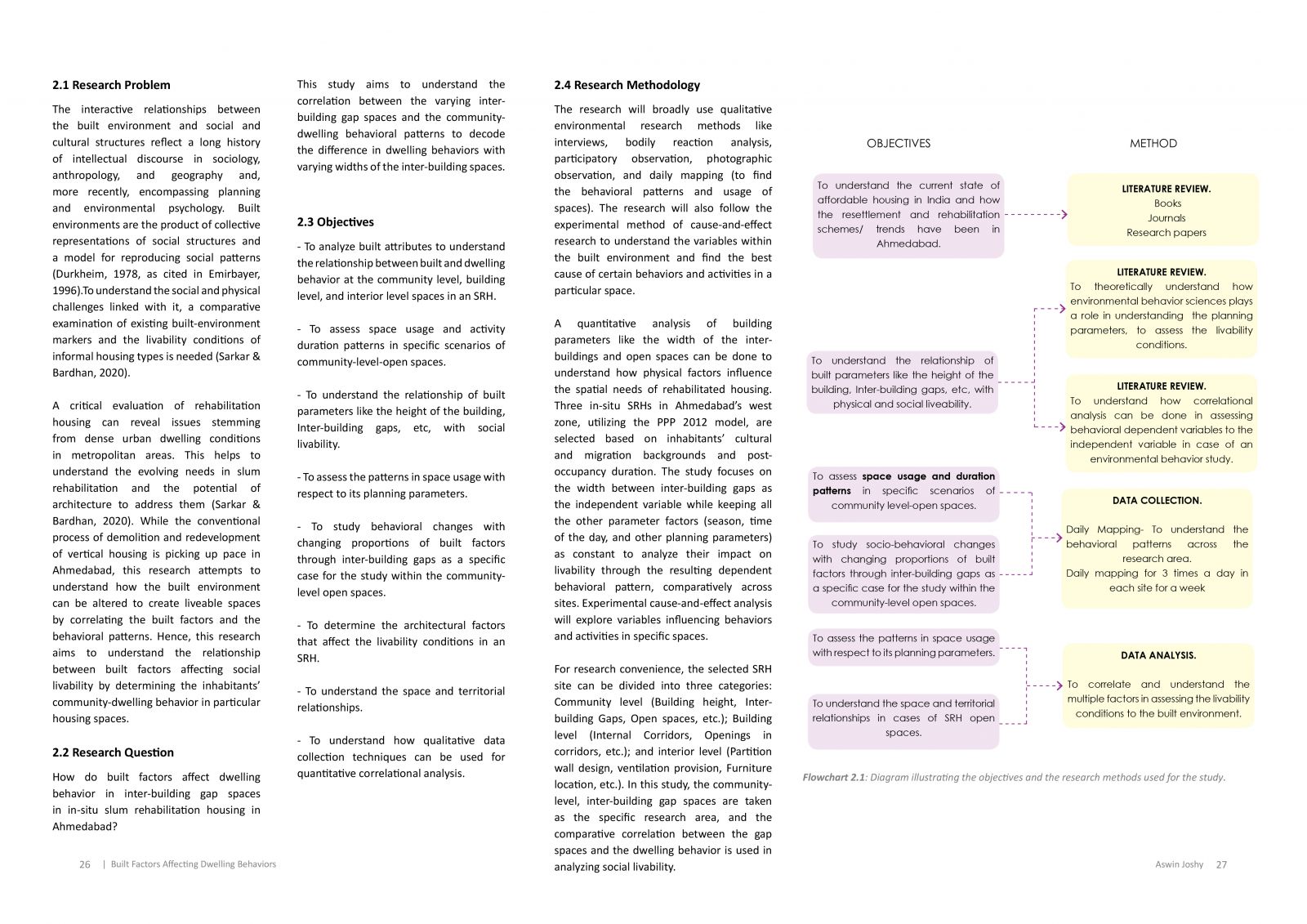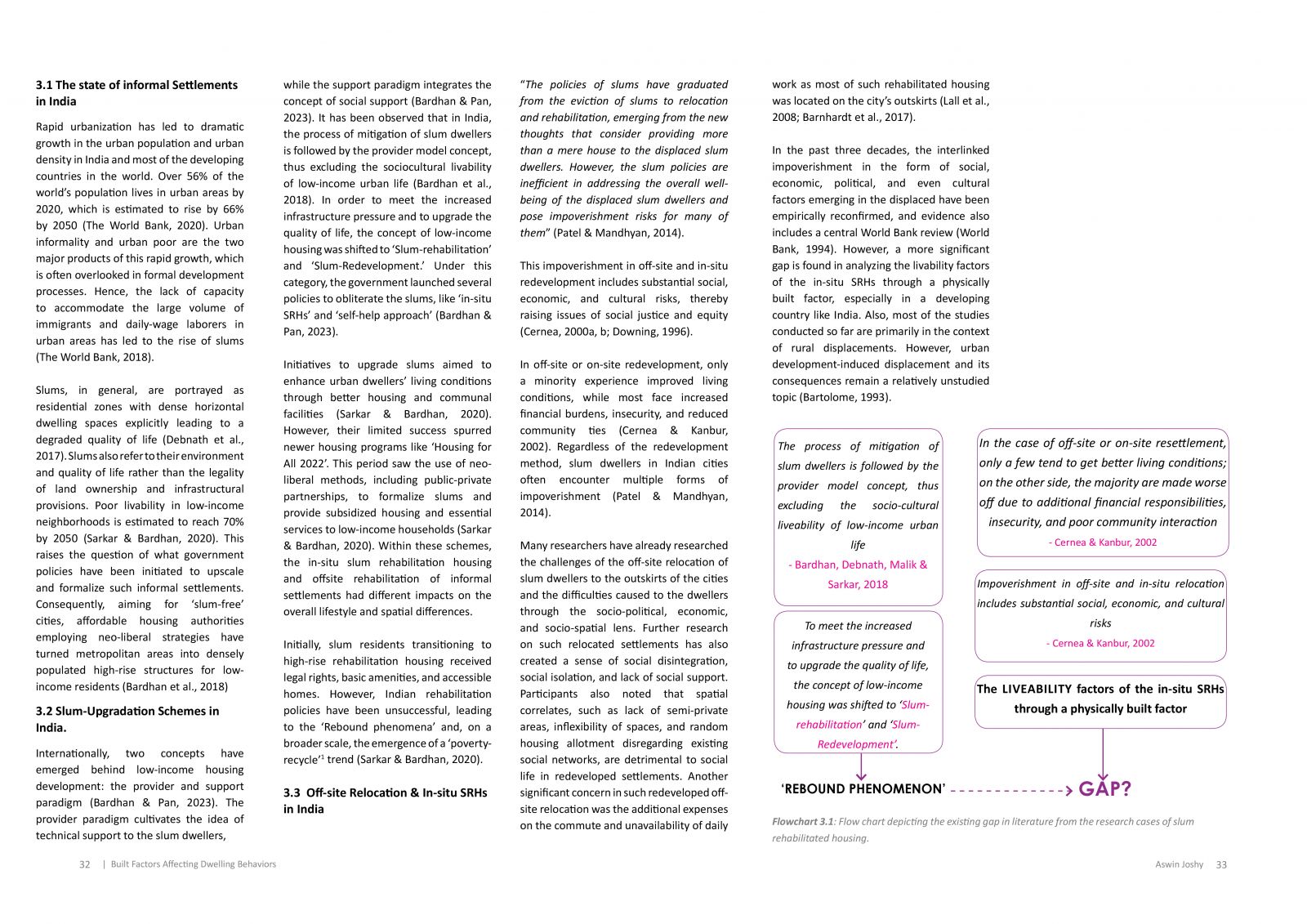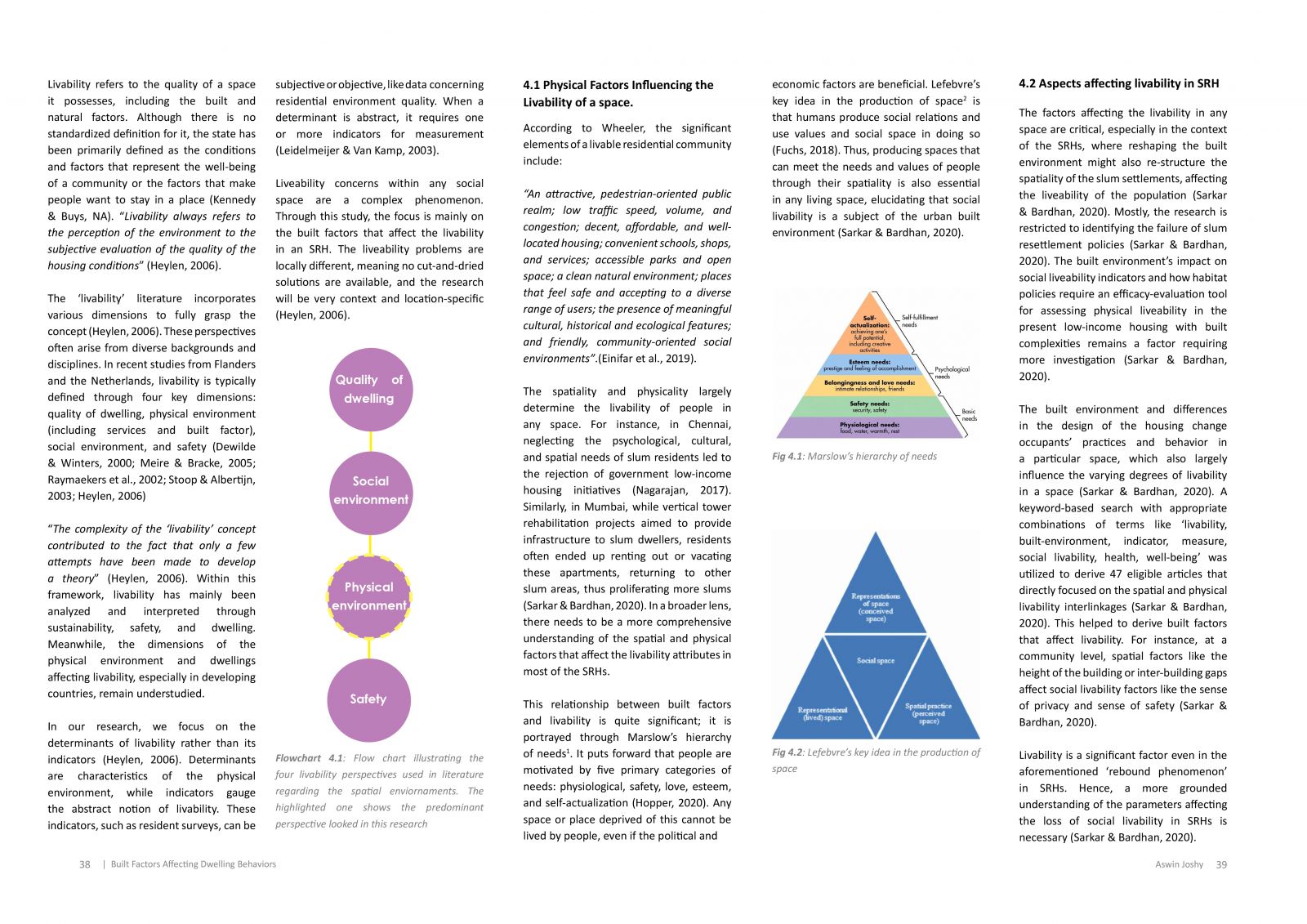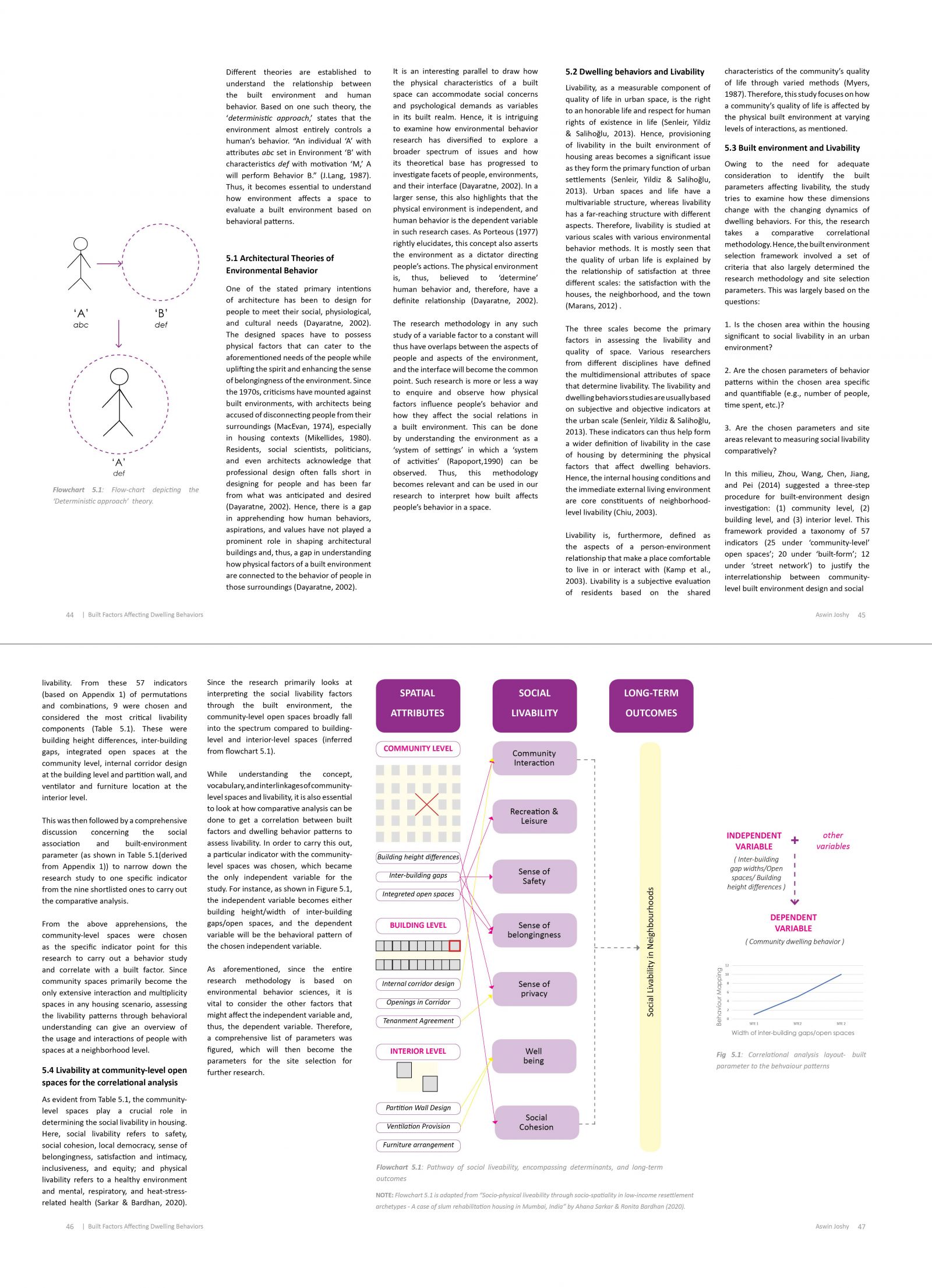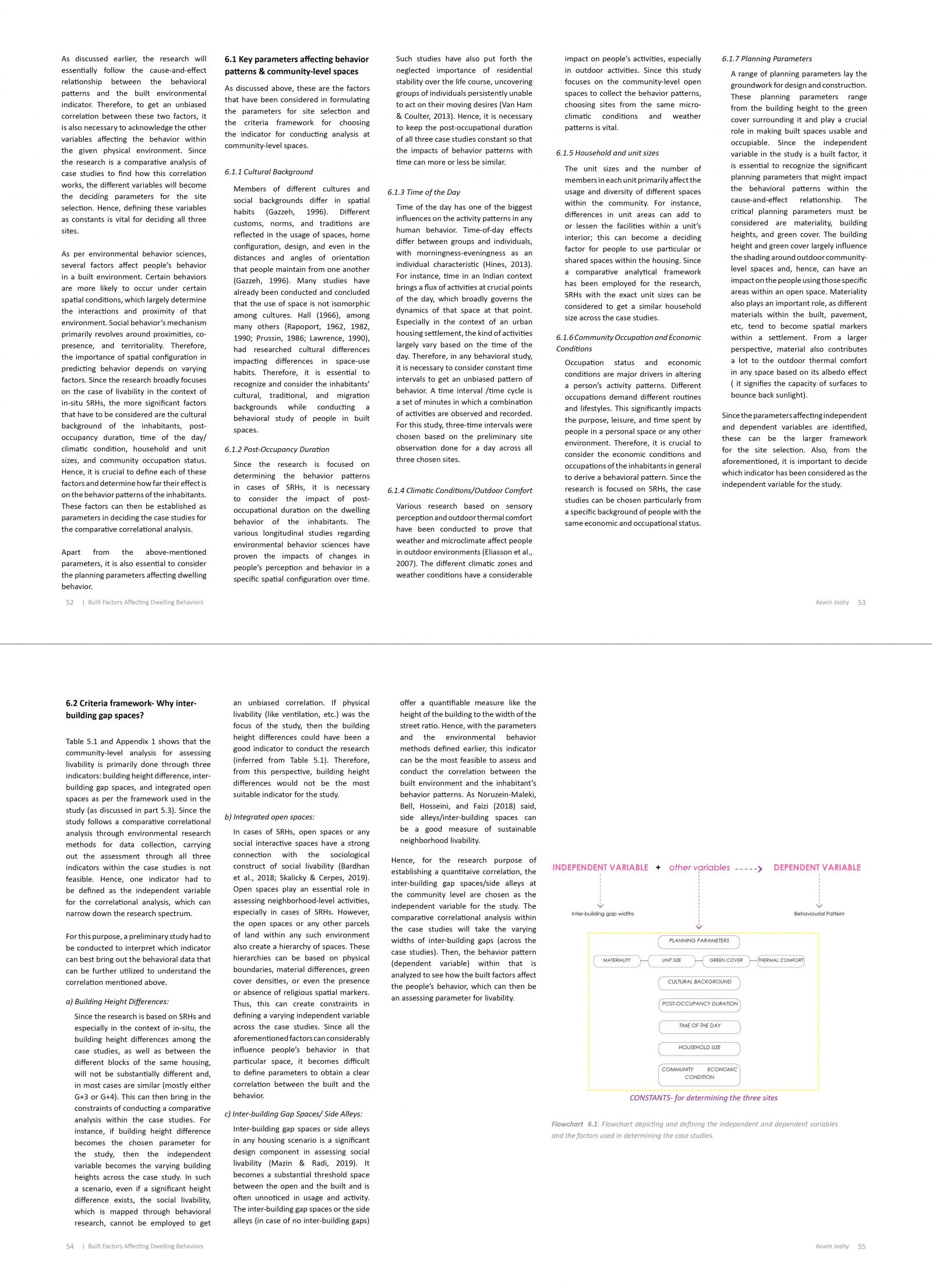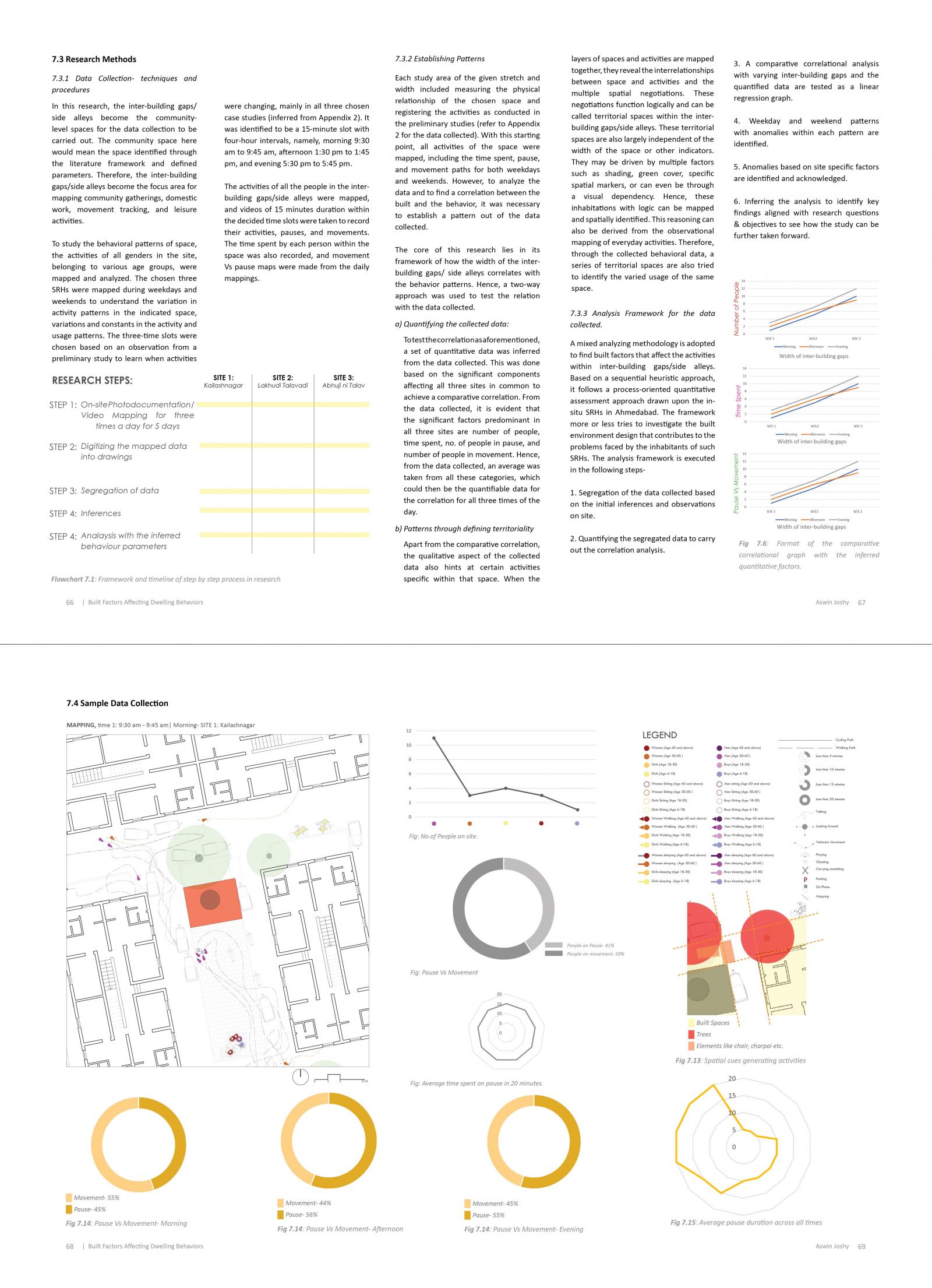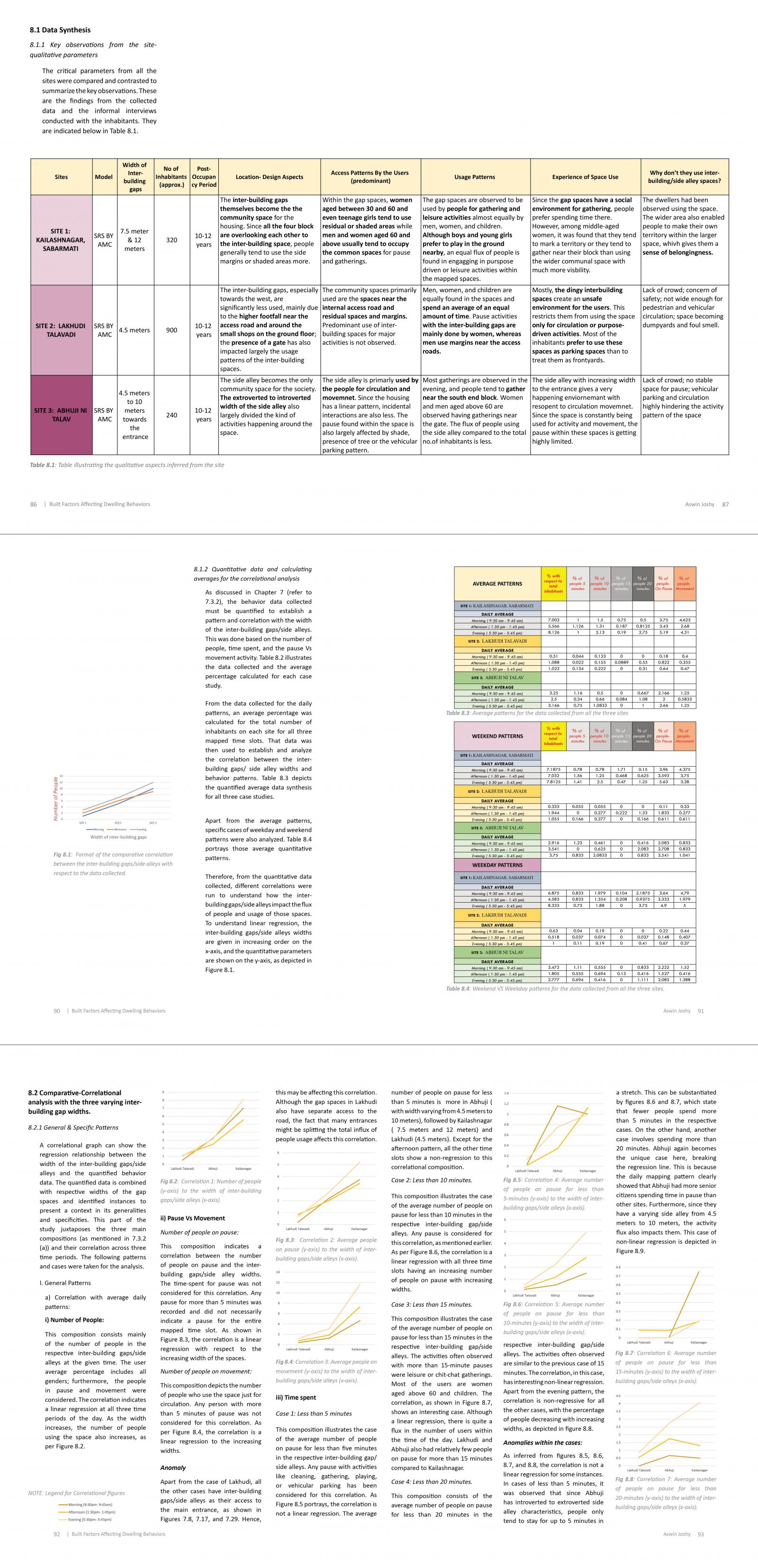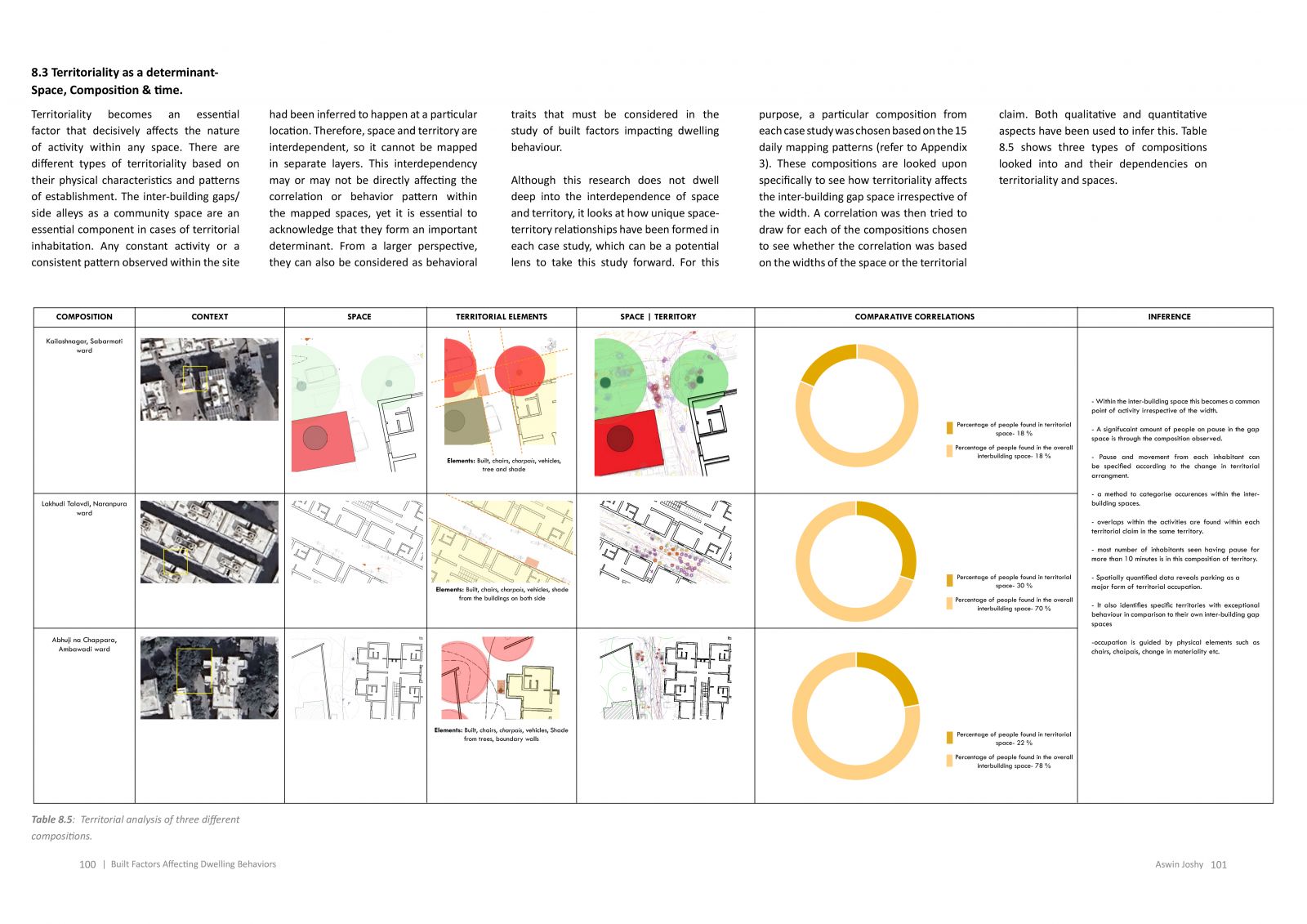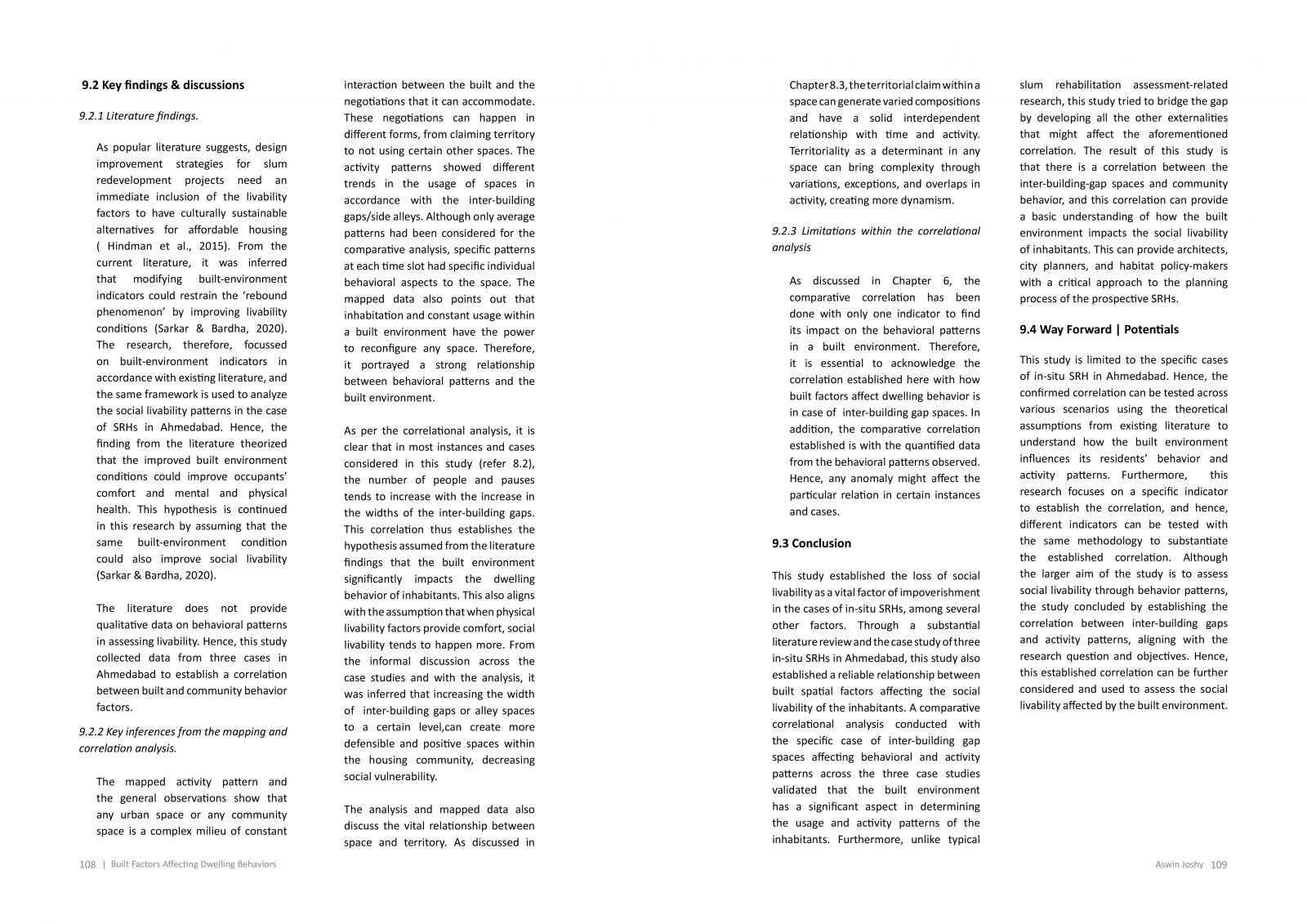Your browser is out-of-date!
For a richer surfing experience on our website, please update your browser. Update my browser now!
For a richer surfing experience on our website, please update your browser. Update my browser now!
The rapid urbanization and increasing labor demands have spurred the growth of informal sectors and settlements in cities to address housing needs. However, the housing quality in these informal and rehabilitated settlements remains a contention. Effective housing design should cater to physical, social, psychological, and cultural needs to foster a sense of belongingness. Criticisms since the 1970s, particularly in housing (Mikellides, 1980), accuse architects of disconnecting people from their environments (MacEvan, 1974). Studies conducted by Bhide et al. (2003) and Restrepo (2010) highlight "unsuitable living conditions" and "unattainable means of living" as key factors contributing to the failure of SRHs.
Livability, defined by the quality of living spaces, is influenced by built and natural elements, cultural backgrounds, community dynamics, and planning parameters. Spatial and physical factors significantly determine livability. This research aims to explore how these parameters affect inhabitants' dwelling behavior within the inter-building gap spaces in in-situ slum rehabilitation housing in Ahmedabad.
While political, social, and economic factors have been studied as reasons for the failure of in-situ SRHs, spatial-physical factors affecting livability remain understudied, especially in developing countries like India.
The objectives of this research include analyzing built attributes to understand the relationship between built parameters and livability at community, building, and interior levels, followed by assessing space usage patterns in community-level open spaces, and studying behavioral changes with varying proportions of built factors in inter-building gaps.
Qualitative environmental research methods will be employed, including bodily reaction analysis, participatory observation, photographic documentation, and daily mapping to reveal behavioral patterns and space usage. Three in-situ SRHs in Ahmedabad's west zone, using the PPP 2012 model, are selected based on inhabitants' cultural backgrounds and post-occupancy duration. Experimental cause-and-effect analysis will explore variables influencing behaviors in specific spaces to establish the correlation between the built and the activity patterns.
The study focuses on the width of the inter-building gaps/side alley spaces as the independent variable while keeping other factors constant to analyze the resulting behavioral patterns.
The research scope is limited to analyzing built factors influencing livability within inter-building gap spaces in three specific in-situ SRHs in Ahmedabad, considering climatic conditions, seasonal changes, and external parameters like nearby open grounds and parking patterns. The expected outcome is to provide architects and policy planners with a comparative design framework to enhance physical-built factors affecting SRH livability, with broader implications for in-situ SRH design and built factors.
